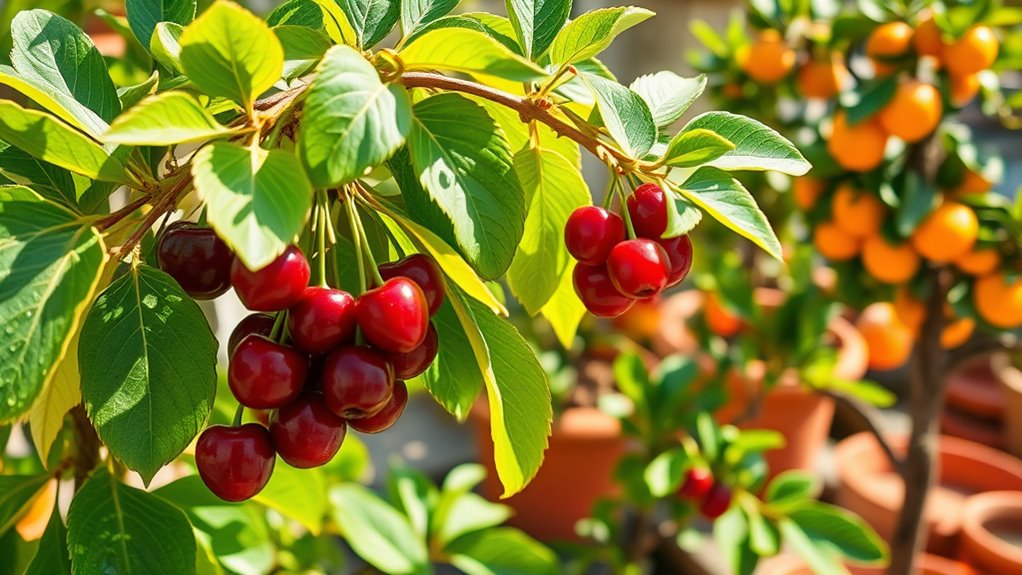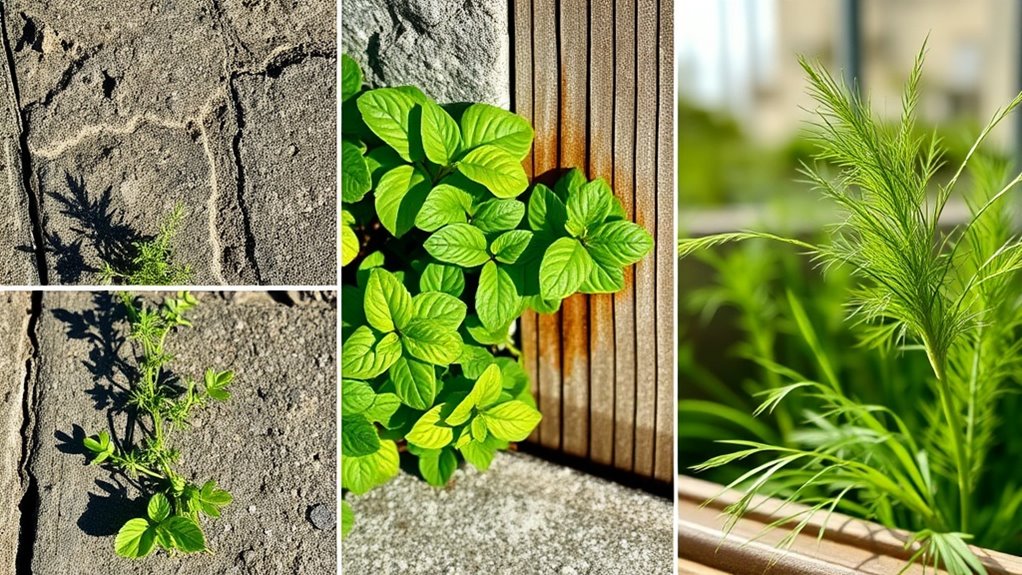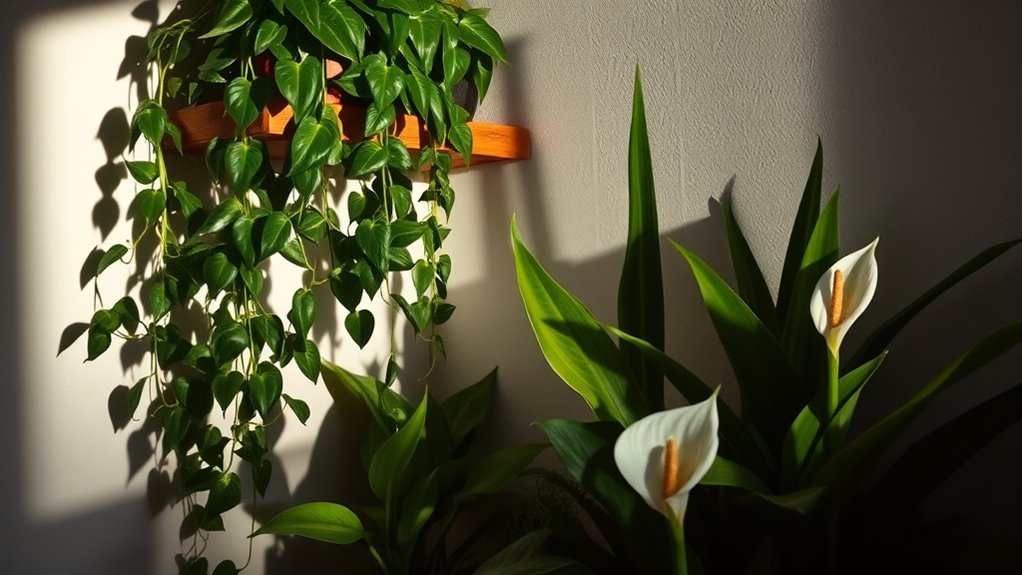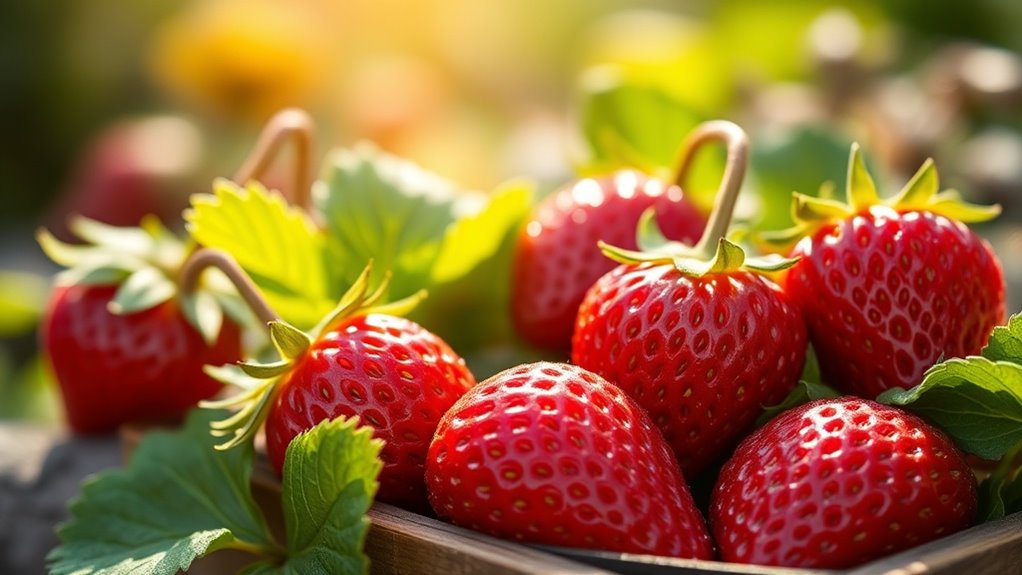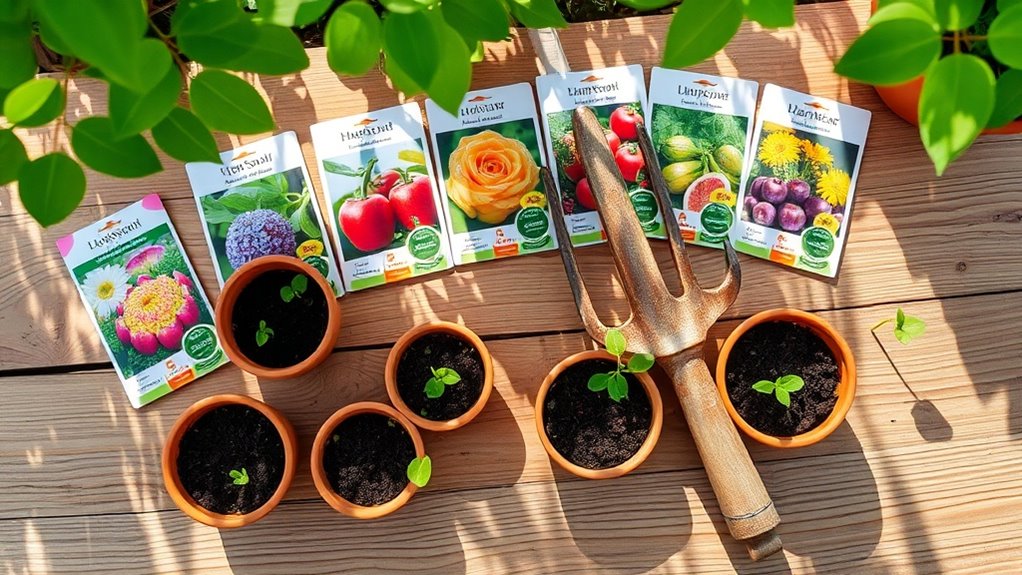Small-Space Fruit Trees That Actually Produce
If you’re looking to maximize your small outdoor space, small-space fruit trees can be your best bet. Dwarf apple trees, compact cherries, and miniature citrus varieties not only fit into tight corners but also produce impressive yields. With the right care, you could enjoy fresh fruits right from your patio. Curious about which varieties thrive best and how to care for them? Let’s explore your options.
Key Takeaways
- Dwarf and compact fruit trees, such as apples and peaches, thrive in small spaces, reaching heights of 4 to 10 feet.
- Espalier techniques allow fruit trees to grow flat against walls, maximizing space while adding aesthetic appeal.
- Container-grown miniature fruit trees, like Meyer lemons and figs, offer flexibility in placement and can produce fruit comparable to ground-grown trees.
- Vertical gardening with fruit vines and columnar trees utilizes trellises and walls, saving ground space and enhancing yield.
- Regular maintenance, including pruning and proper watering, is essential for maximizing fruit production in small-space gardens.
Dwarf Apple Trees
Dwarf apple trees are a fantastic choice for anyone looking to grow their own fruit in limited space.
These dwarf fruit trees typically reach just 4 to 10 feet in height, making them perfect for small gardens or even patios.
They thrive in well-drained soil and need full sun to produce abundant fruit.
You’ll find a variety of dwarf apple tree cultivars, each offering unique flavors and textures.
Regular pruning will help maintain their shape and encourage healthy growth.
Plus, with proper care, you can harvest delicious apples in just a few years, making them a rewarding addition to any garden. Additionally, these trees are known for their compact size, which allows them to fit into tight spaces without sacrificing fruit production.
Miniature Citrus Trees
If you’re looking to add a splash of zest to your small space, miniature citrus trees are a fantastic choice. They thrive in bright light and well-draining soil, making them perfect for sunny windowsills or patios. Additionally, these trees can produce fruit in as little as two years, offering delicious fruit for your enjoyment sooner than you might expect. Let’s explore the best mini citrus varieties that will flourish in your home.
Ideal Growing Conditions
While miniature citrus trees can thrive in various environments, they flourish best in bright, indirect sunlight and warm temperatures.
Aim for at least six hours of light daily, either from a sunny window or grow lights.
Keep the temperature between 65°F and 75°F, as cooler conditions can hinder growth.
Ensure good drainage by using a well-aerated potting mix, and consider pots with drainage holes.
Water your trees when the top inch of soil feels dry, but avoid overwatering to prevent root rot.
Fertilize every six weeks during the growing season with a balanced fertilizer for optimal fruit production.
Best Mini Citrus Varieties
Miniature citrus trees not only bring a splash of color to your space but also produce delicious fruit, making them a favorite among indoor gardeners. Here are some of the best mini citrus varieties you can grow:
| Variety | Description |
|---|---|
| Calamondin | A tangy orange, perfect for garnishes. |
| Meyer Lemon | Sweet, thin-skinned lemons ideal for cooking. |
| Key Lime | Small, aromatic limes with a unique flavor. |
| Kumquat | Bite-sized fruits that can be eaten whole. |
| Mandarin Orange | Sweet and juicy, perfect for snacking. |
These varieties thrive in pots, ensuring you enjoy fresh fruit right at home!
Compact Cherry Trees
Have you ever dreamed of enjoying fresh cherries right from your own backyard, even in limited space? Compact cherry trees are the perfect solution! Varieties like the ‘Stella’ or ‘Bing’ can thrive in pots, reaching heights of just 4 to 5 feet. These trees not only provide delicious, sweet fruit, but they also add beauty to your garden. Make sure to plant them in well-draining soil and place them in a sunny spot. Regular pruning encourages airflow and healthy growth. Additionally, small-space fruit varieties can help diversify your garden and maximize your yield. With a little care, you’ll be harvesting your own cherries in no time, even in the tiniest of gardens!
Patio Peach Trees
If you’re looking to grow peaches in a limited space, patio peach trees are your best bet.
You’ll want to choose varieties specifically bred for container growth, and caring for them involves regular pruning, watering, and fertilizing. To maximize production, consider implementing effective techniques to enhance the yield of small fruit trees. Once you’ve mastered their maintenance, you’ll be rewarded with delicious peaches right from your own patio.
Ideal Varieties for Patios
When it comes to maximizing your patio space, choosing the right variety of peach tree can make all the difference.
Look for compact options like the ‘Bonanza’ or ‘Honey Babe,’ both designed for limited spaces. These dwarf varieties produce sweet, juicy peaches while staying under 4 feet tall. They thrive in containers, making them perfect for patios.
Additionally, consider the ‘Pix Zee’ for its attractive foliage and abundant fruit.
Ensure you pick self-pollinating varieties, so you won’t need multiple trees.
With the right selection, you’ll enjoy delicious peaches right from your patio, enhancing your outdoor experience.
Care and Maintenance Tips
While patio peach trees are a delightful addition to your outdoor space, proper care and maintenance are essential for optimal growth and fruit production.
Ensure your tree receives at least six hours of sunlight daily and water it thoroughly but infrequently, allowing the soil to dry out between sessions.
Fertilize with a balanced fertilizer in early spring, following package instructions.
Regularly check for pests and diseases, treating them promptly with organic solutions if needed.
Prune your tree in late winter to shape it and remove any dead or crossing branches.
With consistent care, you’ll enjoy a bountiful peach harvest.
Harvesting Your Peaches
After giving your patio peach tree the care it needs, the time will come to reap the rewards of your efforts.
Harvest peaches when they’re fully ripe, usually determined by their vibrant color and slight softness when gently squeezed.
You’ll want to pick them in the morning for the best flavor.
Use a twisting motion to detach the fruit, avoiding damage to the tree.
If you notice any fruit flies or pests, harvest promptly to prevent infestations.
Store your peaches in a cool place, and enjoy their juicy sweetness fresh or in your favorite recipes.
Happy harvesting!
Small Fig Trees
Small fig trees are a delightful addition to any compact garden, offering both beauty and delicious fruit. These trees thrive in containers and reach heights of just 3 to 5 feet, making them perfect for small spaces.
You’ll love their lush, green leaves and unique, sweet figs.
Plant your fig tree in full sun and well-drained soil for the best results. Water regularly, especially during dry spells, but avoid overwatering.
Pruning helps maintain size and encourages better fruit production. Additionally, fig trees are considered container-friendly plants, making them ideal for those with limited gardening space.
With a little care, you’ll enjoy fresh figs right from your garden, adding a gourmet touch to your culinary creations.
Columnar Pear Trees
Columnar pear trees bring a unique vertical charm to small gardens, making them an excellent choice for limited spaces.
You’ll appreciate their compact growth, which allows for easy harvesting and maintenance.
Here are three reasons to consider them:
- Space-Saver: Their narrow structure fits snugly against fences or walls, maximizing your garden area.
- Abundant Fruit: You’ll enjoy sweet, juicy pears in late summer, perfect for fresh eating or preserving.
- Ornamental Appeal: They bloom beautifully in spring, providing stunning flowers that attract pollinators.
With proper care, these trees can thrive and enhance your garden’s beauty and productivity. Additionally, growing fruit in pots can be an effective way to maximize your gardening potential, especially in small spaces.

